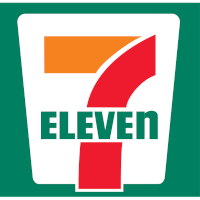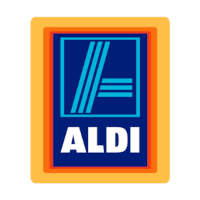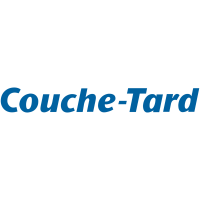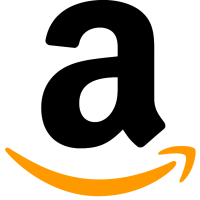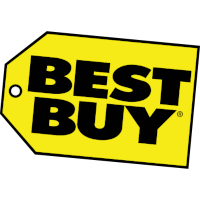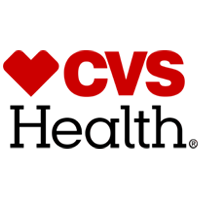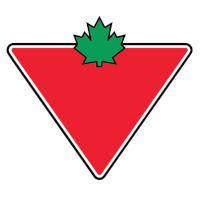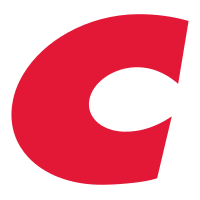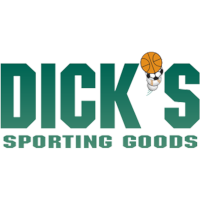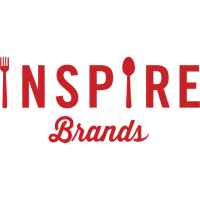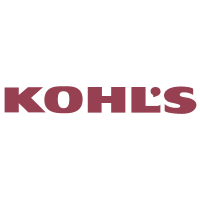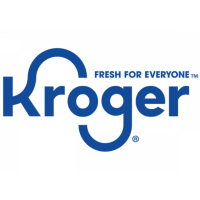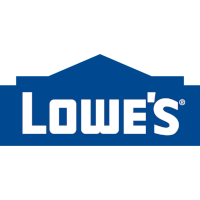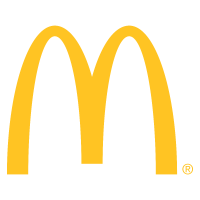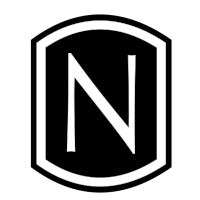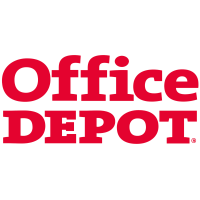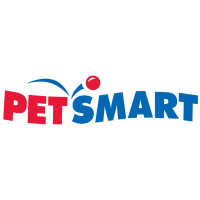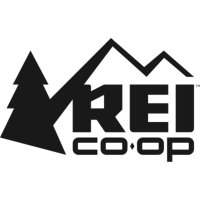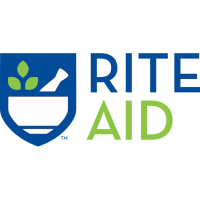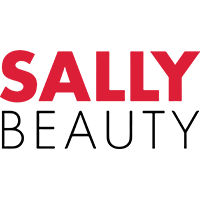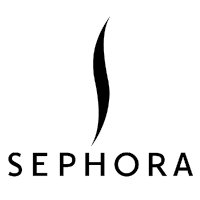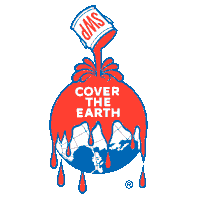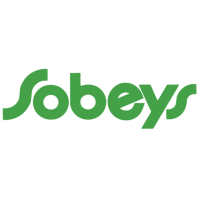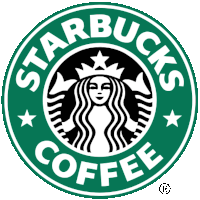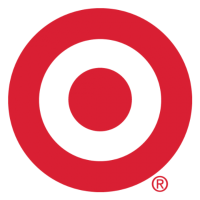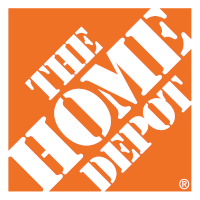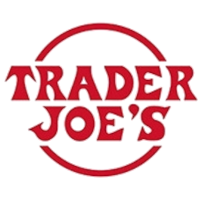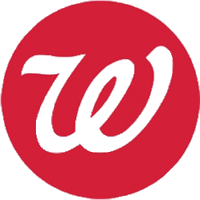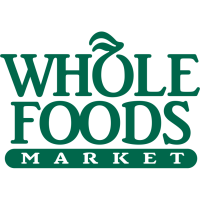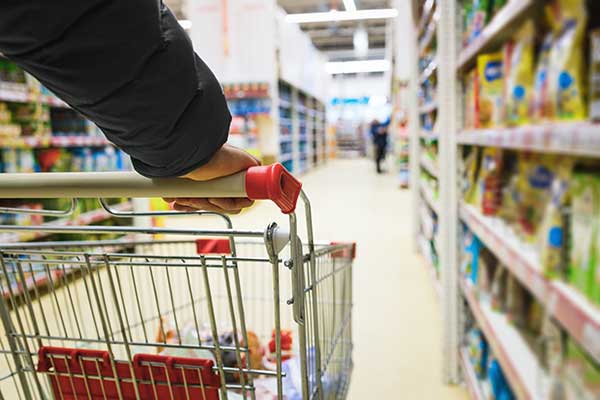Key Findings
Overview
For 2024, Toxic-Free Future updated the criteria for the Retailer Report Card, reorganized as “Four Essential Elements for a Safer Marketplace”: Corporate Commitment, Transparency, Ban the Bad, and Safer Solutions. The Four Essential Elements are based on current best practice and redistribute available points, weighted toward restricting chemicals and plastics of high concern (Ban the Bad) and selling products known to be safer (Safer Solutions).
Of the Four Essential Elements, retailers on average were most likely to earn points for Corporate Commitment, primarily through adopting safer chemicals policies (28 of 50 retailers). Retailers were also likely to earn points for Ban the Bad, by restricting hazardous chemicals and plastics, setting chemical and plastic elimination goals, and publicly reporting on progress. Retailers were less likely to earn points for Transparency, especially for disclosure through the supply chain on the chemical and material content of articles (solid objects like furniture or clothing as opposed to liquids and gels).
Retailers were least likely to earn points for Safer Solutions by adopting a definition for “safer chemical,” or investing in, implementing, or tracking safer solutions. Where retailers have gone beyond regulatory compliance, they have tended to follow the model used by most regulation: identifying known hazardous chemicals and restricting them in products. The criteria outlined in Safer Solutions follow a more robust model, used by programs like U.S. EPA Safer Choice, requiring that all chemicals and materials in a product be identified and assessed to meet or exceed minimum hazard standards. Leading retailers have adopted this approach, though most have not.
2024 Retailer Report Card Average Score by Element (% of total possible points)
For additional detail on how each of the 50 retailers scored against the Four Essential Elements for a Safer Marketplace, see the bar graphs here. And for even more detail, click on any retailer in the grade section.
Corporate Commitment
Of the Four Elements for a Safer Marketplace, more retailers earned points for Corporate Commitment than any other element.
- Fifty-six percent of retailers (28 of 50) have a corporate safer chemicals policy that aims to avoid chemicals or plastics of high concern. Two retailers, CVS Health and Ulta Beauty, launched safer chemicals policies for the first time in 2024.
- Sixteen percent of retailers (8 of 50) participate in the Chemical Footprint Project (CFP). CVS, Dollar General, Dollar Tree, Rite Aid, Staples, Target, Walmart, and Whole Foods Market are all CFP Signatories. Dollar General, Dollar Tree, Target, Walmart, and Whole Foods Market also completed the CFP 2023 Survey.
- Five retailers earned points for supporting governmental policies to reduce chemicals and plastics of high concern: Apple, IKEA, REI, Sephora, and Walmart. For example, both Sephora and Walmart supported the expansion of the EPA Safer Choice program to additional product categories, particularly beauty and personal care products.
Transparency
Most retailers assessed do not know the chemical content of the products they sell.
- Fifty-four percent of retailers (27 of 50) do not ask their suppliers for the chemical content of products at any level of disclosure for the retailer’s internal use.
- Fifty-six percent of retailers (28 of 50) do not ask their suppliers to disclose chemical content of products to consumers.
Meanwhile, many leading retailers have made meaningful progress utilizing tools such as UL WERCSmart to require suppliers to disclose chemical ingredients in formulated products, such as household cleaning products, beauty, and personal care products. Some companies are pushing the envelope by pressing suppliers to achieve full ingredient disclosure, disclosing generic ingredients such as fragrances and flavors.
Very few companies require disclosure of ingredients in articles. “Articles” are generally solid objects as opposed to “formulated products,” which are generally liquids or gels. The lack of disclosure for articles is problematic, as they frequently contain chemicals and plastics of high concern. Apple is the clear leader in this area, requiring suppliers to participate in its Full Material Disclosure program. Apple’s manufacturers report on material composition through its secure data collection system, with the goal of cataloging and mapping each chemical in the materials used in Apple products. For iPhone, iPad, and Mac products released in 2023, the company collected detailed chemical information of 93 percent of each product by mass, on average. Additionally, in 2022, more than 1,000 Apple supplier facilities shared their chemical inventories through its Chemical Safety Disclosure program.
Two companies, Walmart and Whole Foods Market, received credit for publicly disclosing their chemical footprints. Walmart became the first retailer to calculate, track, and report its chemical footprint beginning in 2017, focused on formulated products.
Ban the Bad
Retailers continue to make progress reducing or eliminating chemicals and plastics of high concern. Forty-four percent (22 of 50) of retailers assessed have current, measurable goals for reduction; 68 percent (34 of 50) reported making reductions since 2020.
PFAS
In line with rising public concern and pending legislative bans, the largest number of goals focus on the elimination of PFAS, also known as forever chemicals. PFAS are widely used to provide oil and water resistance and are linked to a wide range of health problems including a weaker immune system, cancer, increased cholesterol levels, pregnancy-induced hypertension, liver damage, reduced fertility, and increased risk of thyroid disease. Thirty percent (15 of 50) of retailers have set goals to eliminate PFAS in a variety of product types, including beauty products, cookware, electronics, food packaging, footwear, household cleaning, outdoor furniture, pet food products, packaging, and textiles.
PVC
Ten retailers have set goals to eliminate the plastic polyvinyl chloride (PVC) in specific products and packaging. PVC is made from vinyl chloride, a known human carcinogen associated with liver cancer, brain and lung cancers, and cancers of the blood. From production and use to disposal, PVC poses serious threats to human health and the environment, exposing low-income communities and communities of color, workers, and consumers to dangerous chemicals. Nine retailers have set goals to eliminate PVC in packaging. In addition, Canadian Tire has set a goal to eliminate PVC in outdoor sporting goods, and Dollar Tree has set a goal to eliminate it in children’s products. Meanwhile, the number one use of PVC is in building materials. Home improvement chains such as The Home Depot, Lowe’s, and LL Flooring (Lumber Liquidators) must phase out the sale of PVC in building materials such as vinyl flooring and offer safer solutions, such as linoleum flooring.
Retailers tackling toxic beauty products
In the ten years since the launch of the Mind the Store program, many leading retailers have adopted corporate chemical policies to restrict hazardous chemicals in beauty and personal care products. Recognizing disproportionate hazards faced by women of color, over the last few years some retailers have expanded their restricted substance lists to target chemicals in beauty products marketed to women of color. Since the last Retailer Report Card was published in 2021, retailers including Rite Aid, Sephora, Target, and Ulta Beauty have made progress restricting harmful chemicals in products marketed to people of color. Other retailers must join them and take action on beauty products of environmental justice concern.
Ban the Bad Goals
Retailers that adopted goals to reduce or eliminate highly hazardous chemicals and plastics
| Chemicals / Plastics Targeted for Reduction / Elimination | |||||||||
|---|---|---|---|---|---|---|---|---|---|
| Retailer | PRIORITY PRODUCTS to which reduction or elimination goal applies | GOAL DATE | Bisphenols | Flame Retardants | PFAS | Phthalates | PVC Plastic | EPS/PS Plastics | Other CHCs/PHCs |
| Apple | Electronics | 2025* |
|
|
|
||||
| Best Buy | Electronics | 2027 |
|
||||||
| Canadian Tire | Outdoor sporting goods | NA |
|
||||||
| Packaging | 2025 |
|
|
||||||
| Receipt Paper | NA |
|
|||||||
| Textiles | NA |
|
|||||||
| CVS Health | Packaging | 2030 |
|
||||||
| Dick’s Sporting Goods | Textiles | 2025 |
|
||||||
| Dollar Tree | Children’s products | 2024 |
|
||||||
| Pet food products | 2024 |
|
|||||||
| IKEA | Cookware | 2026 |
|
||||||
| Lowe’s | Packaging | 2025 |
|
|
|||||
| Macy’s | Textiles | 2025 |
|
|
|
|
|
||
| McDonalds | Food packaging | 2025 |
|
||||||
| Restaurant Brands International | Food packaging | 2025 |
|
||||||
| REI | Cookware | 2024 |
|
||||||
| Footwear and textiles | 2024 / 2026** |
|
|||||||
| Sephora | Beauty products | 2030 |
|
|
|
|
|||
| Packaging | 2030 |
|
|
|
|
|
|||
| Starbucks | Food packaging | 2025 |
|
|
|
||||
| Target | Beauty products | 2025 |
|
||||||
| Cookware | 2025 |
|
|||||||
| Packaging | 2025 |
|
|
|
|
||||
| Textiles | 2025 |
|
|
||||||
| The Home Depot | Outdoor furniture | 2025 |
|
||||||
| TJX | Packaging | NA |
|
||||||
| Ulta Beauty | Beauty products | 2024 |
|
|
|
||||
| Walgreens | Beauty and household cleaning products | 2024 |
|
|
|||||
| Packaging | 2030 |
|
|
||||||
| Walmart | Packaging | 2025 |
|
|
|||||
| Whole Foods | Formulated products | 2025 |
|
||||||
| Yum Brands | Food packaging | 2025 |
|
|
|
||||
| TOTAL NUMBER | 6 | 2 | 20 | 4 | 11 | 6 | 11 | ||
Notes on this table:
This table summarizes active goals retailers have set to reduce and eliminate chemicals and plastics of high concern. This table doesn’t take into account prior goals that retailers have already achieved.
CHS = Chemicals of High Concern / PHCs = Plastics of High Concern
NA = retailer has not disclosed a deadline for its goal.
* Apple’s 2025 deadline only applies to PFAS
** REI will restrict PFAS in all cookware, apparel, accessories, footwear, packs, and bags, by fall 2024. It will restrict PFAS in all other textiles by fall 2026.
Ban the Bad Progress
Retailers that reported progress reducing or eliminating highly hazardous chemicals and plastics since 2020
| Chemicals / Plastics Targeted for Reduction / Elimination | |||||||||
|---|---|---|---|---|---|---|---|---|---|
| Retailer | PRIORITY PRODUCTS to which reduction or elimination applies | Bisphenols | Flame Retardants | PFAS | Phthalates | PVC Plastic | EPS/PS Plastics | Other CHCs/PHCs | |
| Amazon | Baby, household cleaning, personal care, and beauty |
|
|||||||
| Packaging |
|
||||||||
| Apple | Cleaners and degreasers |
|
|||||||
| Plastics, adhesives, and lubricants |
|
||||||||
| Best Buy | Electronics |
|
|
||||||
| Canadian Tire | Textiles and other private label products |
|
|||||||
| Chipotle | Food packaging |
|
|||||||
| Costco | Textiles |
|
|||||||
| CVS Health | Packaging |
|
|||||||
| Thermal receipt paper |
|
||||||||
| Dick’s Sporting Goods | Textiles |
|
|
||||||
| Dollar General | Beauty, personal care, and cleaning products |
|
|||||||
| IKEA | Coatings for products |
|
|||||||
| Cookware |
|
||||||||
| Glues and coatings for products |
|
||||||||
| Inspire Brands | Food service ware |
|
|||||||
| Kohl’s | Textiles |
|
|||||||
| Kroger | Baby, beauty, and personal care products |
|
|
||||||
| Food packaging |
|
|
|||||||
| Loblaw | Receipt paper |
|
|||||||
| Textiles |
|
||||||||
| Lowe’s | Fabric protection sprays |
|
|||||||
| Packaging |
|
|
|||||||
| McDonalds | Food packaging |
|
|||||||
| Toys |
|
||||||||
| Metro | Receipt paper |
|
|||||||
| Office Depot | Receipt paper |
|
|||||||
| Panera | Food cutlery |
|
|||||||
| Food packaging |
|
||||||||
| Restaurant Brands International | Food packaging |
|
|
||||||
| REI | Tents |
|
|||||||
| Textiles |
|
||||||||
| Rite Aid | Baby, beauty, household cleaning, and personal care |
|
|
||||||
| Food packaging |
|
|
|
||||||
| Sephora | Beauty and fragrance products |
|
|
|
|||||
| Sobeys | Packaging |
|
|||||||
| Staples | Food service ware |
|
|||||||
| Furniture |
|
||||||||
| Subway | Food packaging |
|
|
||||||
| Target | Beauty and personal care products |
|
|
|
|||||
| Packaging |
|
||||||||
| Receipt paper |
|
||||||||
| The Home Depot | Cleaning products |
|
|
||||||
| Packaging |
|
|
|||||||
| TJX | Food service ware |
|
|||||||
| Receipt paper |
|
||||||||
| Ulta Beauty | Beauty and personal care products |
|
|
|
|||||
| Walgreens | Baby, beauty, household cleaning, and personal care |
|
|||||||
| Over the counter blister packaging |
|
||||||||
| Receipt paper |
|
||||||||
| Walmart | Baby, beauty, household cleaning, and personal care |
|
|
||||||
| Packaging |
|
|
|||||||
| Whole Foods | Body care and cleaning products |
|
|||||||
| Yum Brands | Food packaging |
|
|||||||
| TOTAL NUMBER | 11 | 2 | 16 | 8 | 5 | 10 | 22 | ||
Notes on this table:
This table summarizes progress retailers reported reducing or eliminating chemicals and plastics of high concern since 2020, in products, packaging, or manufacturing. This table doesn’t document chemicals or plastics retailers previously reduced or eliminated.
* CHS = Chemicals of High Concern / PHCs = Plastics of High Concern
Safer Solutions
While the vast majority of retailers have taken steps to restrict chemicals and plastics of high concern, far fewer have done the same to ensure that the products they sell are safer. Eighty percent of retailers are failing to ensure Safer Solutions to toxic chemicals and plastics. Leadership companies, though, are demonstrating that advancing safer solutions is entirely feasible.
- Ten retailers, Apple, Best Buy, CVS, Dollar General, IKEA, Rite Aid, Sephora, Staples, Walgreens, and Walmart, have adopted criteria for safer chemicals that align with Washington state’s definition for “safer chemical.”
- Eight retailers, Amazon, Apple, Lowe’s, Sephora, Sobeys, Target, Ulta Beauty, and Walmart, have made financial investments in identifying or developing safer solutions, supporting programs such as ChemFORWARD’s Know Better Do Better Initiative and the Safer Chemistry Impact Fund. Apple and Target each earned top scores for investing over $1 million since 2018.
- Many leading retailers sell private-label products that are certified by credible hazard-based certification programs such as the EPA Safer Choice program, including Amazon, Office Depot, Staples, Target, and Walmart.
- Some retailers have utilized tools such as the GreenScreen® for Safer Chemicals to evaluate safer alternatives to chemicals when making substitution. Best Buy worked with its suppliers to evaluate alternatives to organohalogen flame retardants in its private-label televisions utilizing the GreenScreen® chemical hazard assessment framework. The company has ensured the replacement flame retardants are not ranked high for key hazards under GreenScreen®.
In the years ahead, all retailers must focus their efforts on safer solutions to avoid the trap of regrettable substitutes, ensuring replacement chemicals and materials are safer for consumers, frontline environmental justice communities, workers, and the planet.
Analysis across retail sectors
Calculating average grades for key sectors, big box stores, such as Target and Walmart, earned the highest scores. In contrast, restaurant chains and dollar stores ranked, on average, among the lowest scoring retailer sectors. Retailers in these latter two sectors must step up to protect consumers, especially low-income communities and communities of color, that tend to frequent many of these chains.

The 2024 Report
- I. Executive Summary
- II. Introduction
- III. Grades
- IV. Leaders and Laggards
- VI. Recommendations
- VII. Resources
- VIII. Methodology
- IX. About this Report
More
Select a retailer
Tell retailers that got an “F” to step up and make toxics elimination a priority.

